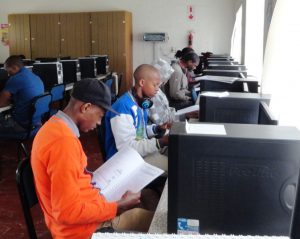Vocational Training, Why?
The combined forces of globalization, technological change and liberalization of markets are creating a more and more competitive economic environment and changing the very nature of work and work organization.
At the same time as opening new job opportunities, they are increasing workers’ vulnerability. The ILO’s Employment Report of 1998-99 estimated that, of a world labour force of 3 billion workers, 25 to 30 percent are underemployed and about 140 million are unemployed. By the end of 1998 an additional 10 million workers are expected to be added to the ranks of the unemployed.
In this environment, the quality of the labour force has become a major determinant in the competitiveness and adaptability of enterprises, workers and the economy; it also poses a challenge to the vocational education and training (VET) systems to meet the rapidly and continuously changing labour market demands.
Education and training systems face a multiple challenge
Firstly, in order to equip workers who are already employed with new skills and competencies, they need to develop a system of continuous in-service training that can respond flexibly and rapidly to labour market requirements.
Secondly, they need to offer young people the sound education and broad initial training that will give them a solid basis for continuing training throughout their working life.
Thirdly, they must ensure access of those who are not employed the disadvantaged and at-risk, to opportunities for training. What is the role of the state and the non-government sector in adapting VET to the changing requirements of the labour market, and in its governance and delivery?
VOCATIONAL TRAINING: A HISTORICAL PERSPECTIVE
The far-reaching transformation of the global economy is compelling governments and the private sector to rethink their development strategy in general. Not everyone will have an academic degree, and even those who have – there are not enough professional jobs for them.
Vocational training is for the most part – still unstructured and unregulated.
Historically, the private sector has played a major role in developing the knowledge and skills it needed, through the family, religious institutions and at the workplace.
A builder would train his son how to build, a carpenter would pass on his skills to his sons, or young boys in the neighbourhood. Chefs would train their kitchen hands.
Until this century, unstructured and informal apprenticeship was the usual means of acquiring the competencies that served as a passport for entry into skilled occupations. As a traditional and informal mode of skill acquisition for semi-skilled trades, crafts and occupations, it still predominates, particularly in the informal and rural sectors of many developing countries. This kind of informal apprenticeship, regulated only by custom and tradition, tends to be a once-in-a-lifetime experience through which existing skills are handed down rather than new skills acquired. At this first stage of Vocational training, the government was not a major player.
When Vocational training became a consideration the main concern of the government was to provide training for those outside employment, for young people outside of higher education and for the disadvantaged.
But with the increased demand for hand-on on trade skills, the original target for this type of training would not produce enough experts. The education system, that is using schools and colleges, were used to impart workplace skills previously taught by local labourers and parents. Thus now we find in many developing countries, technical and vocational subjects are combining academic, technical and hands-on training.
Governments have realised that it has responsibility to ensure that all citizens have access to diverse education and training opportunities and services so that they can become useful members of society. We cannot all be doctors, teachers, lawyers, administrators and civil servants.
Now in the 2018, Vocational training institutions have been set up outside the traditional education system throughout the world. Some may be local council owned, or privately owned or owned by voluntary non-profit organizations. Many large enterprises, recognising the importance of a well qualified labour force and dissatisfied with the quality of workers provided by other institutions, have set up their own training centres so that their current experts can train the next generation of experts.
Examples of areas for vocational training are:
Electrician, Gas workers, Plumbing, Painters, Decorators, Welding, Chefs, Jewellers, Fashion Designers, Sewing Machinists, Gardeners, Artists and Metal workers.
Source: Unesco

